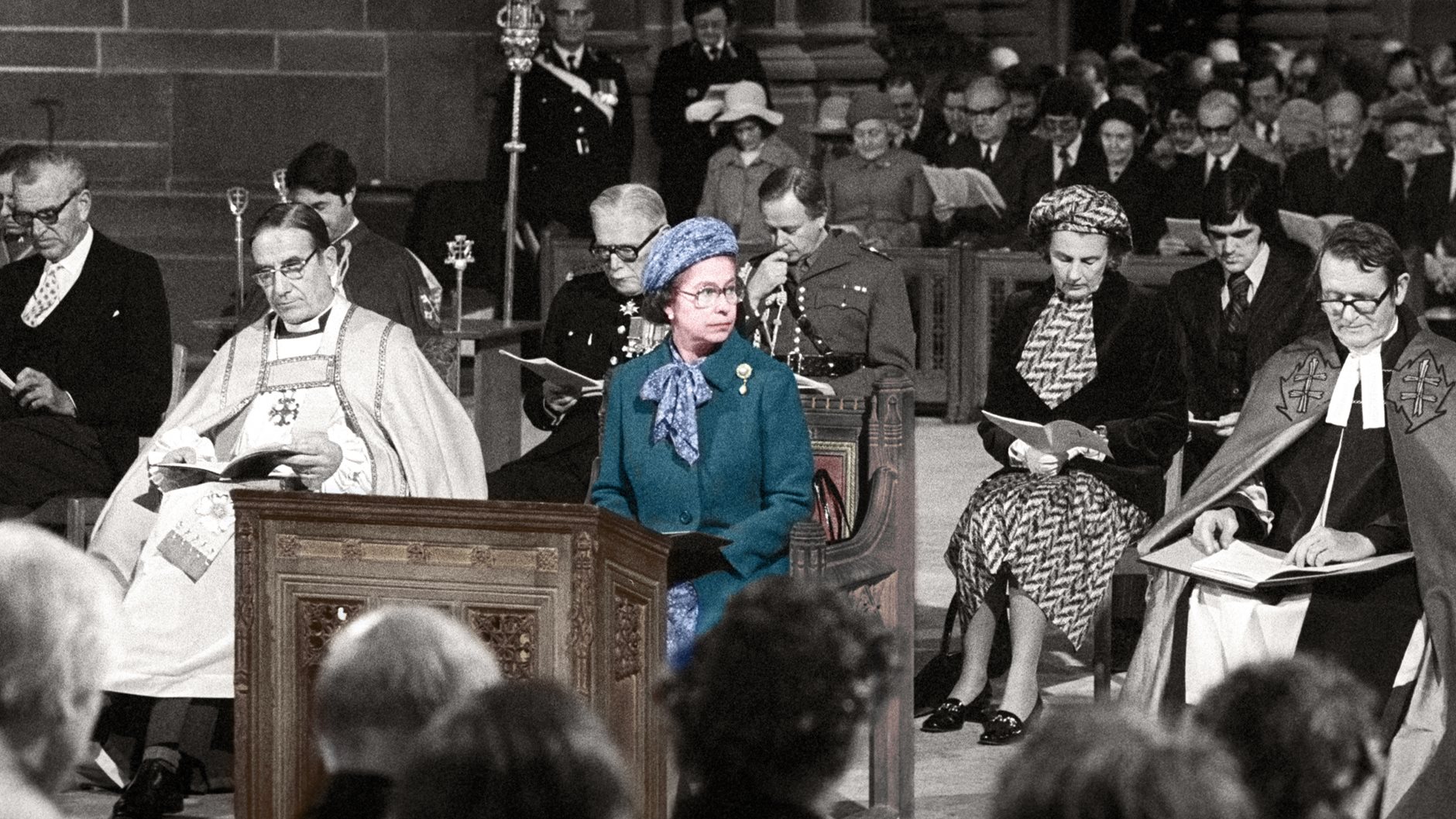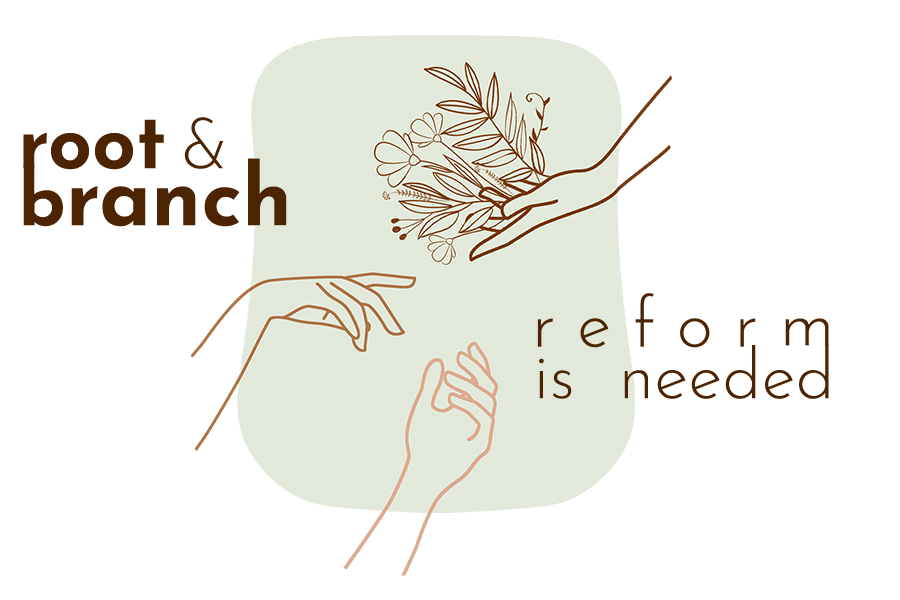Synod Evaluation V: England and Wales and a little Scotland, too
As I sit down to write this, the Queen of England dies. On the BBC, I hear first a comment from the Roman Catholic Cardinal Archbishop of Westminster, and then one from the Anglican Archbishop of Canterbury. How ironic. What does this mean in the long history of the monarchy, even as the Boleyn family are examined on American public television?
Catherine Pepinster examines Elizabeth II from a religious perspective for NCR. Matthieu Lasserre is more pointed in La Croix International; he quotes a senior Vatican official who once described the Queen as “the last Christian monarch”. What does it mean that one of the first interviews on the BBC is with Anglican Bishop Rose, a woman?

Finally, what does it mean that once again, the British Prime Minister is a woman? That Catholic Cardinal did encourage that Conservative Prime Minister to follow Catholic Social Justice teaching and remember the poor. In The Tablet blog Ruth Gledhill concludes that “She is by no means perfect but this already feels better than what we had before.”
By the time you read this, the flurry of news about the monarchy and the Prime Minister will have subsided. I am hoping you are still interested in the synod conclusions in the British Isles. I have found an evaluation this week by Catholic historians Jon Rosebank and Penelope Middelboe in La Croix International. By the way, Middelboe is a member of the core team of the Root & Branch forum, a remarkable synod initiative in England that continues today.
Comparing parish processes with diocesan reports, Rosebank and Middelboe report:
a formal content analysis of the 22 diocesan synodal returns…shows that more than three quarters call for married priests; 91% demand women be ordained. 95% call for reform of canon law, in one case in line with the UN declaration of human rights.
Every single diocese called for more inclusion of LGBTQ+ Catholics, and for transparent systems of safeguarding, audit and scrutiny. Every diocese made it clear that clerical abuse nullified the hierarchy’s authority as an arbiter in moral affairs.
The silent majority of conservative, indifferent pew fodder turns out to be a myth. The English and Welsh laity are demanding radical change with a remarkably united voice.
Most relevant to us, in contrast to that 91%, Rosebank and Middelboe say the English and Welsh synthesis document “squeaks casuistically that ‘most discernment about the valuing of women was not focused on ordination.’” They further report that “women are mentioned in passing as catechists, acolytes and lectors or as having valuable gifts for ‘renewing the missionary dynamism of the Church at local level.’ The priesthood and diaconate are not mentioned at all.”
Rosebank and Middelboe further confirm the point that I have been making by comparing these various national evaluations. The consolidation process is a problem when too few are involved in drawing up the synthesis document in secret. They say, “What we can detect are the muffled sounds of bishops laboring to suffocate the joyous chorus of renewal that arose from the laity.” They contrast the English and Welsh document with the Spanish synthesis, which was developed in an open representative assembly like the German and Australian gatherings. In an earlier article in The Tablet, Sarah Mac Donald quotes Middelboe: “The English and Welsh national synthesis was drawn up behind closed doors. It was written, working under the oversight of an archbishop and a bishop, by a lecturer at Oscott seminary, three diocesan employees, three employed by the bishops’ conference, including its general secretary, Austen Ivereigh who is Pope Francis’s biographer, and Kate Wilkinson, a school chaplain.”
Rosebank and Middelboe go on to provide examples in which “the lessons of history are chillingly mixed,” criticizing bishops all the way back to World War II, but quoting John Paul II, Francis, and Nathalie Becquart speaking positively on the sense of the faithful. I’ll let you read it on your own.
Though Scotland is treated as an afterthought in The Tablet, I wanted to acknowledge the final piece in the Great Britain puzzle. The synthesis there was based on contributions from individual Catholics, parish and other groups, and reports from Scotland’s six dioceses and two archdioceses, with “input from Jewish, Muslim, Bahai, Hindu and Sikh believers.” About ordination, it seems less conclusive but more transparent, perhaps because of the smaller scale. For example:
It was suggested by some that, as there is a need for more priests, therefore married priests and the ordination of women should be considered. This aspiration was considered by others as a quick fix and not addressing adequately the deep crisis of vocation in our society nor reflecting the complementary gifts and talents of women and men. Equality does not mean doing the same thing.
Madoc Carnes summarized “While every diocese acknowledged and celebrated the contribution of women in the Church there was common agreement that women must be given a greater voice in the Church.”
Every national Episcopal Conference was to have sent their ten pages to the Vatican by August 15. 107 of 114 have been received, according to the September 3 Synod office newsletter. FAQ’s spell out how the process is supposed to work. A document for discussion will be presented in October, “drawn up by Sister Birgit Weiler, a missionary working in the Amazon, Fr Paul Bere SJ, a theologian from Burkina Faso, Archbishop Tim Costello of Perth, Australia and Austen Ivereigh, the journalist and Catholic commentator,” among others, it seems, according to Christopher Lamb in The Tablet. Early next year, representative “Ecclesial” (note NOT “Episcopal”) regional conferences will discuss it. We don’t really have such a conference so Canada and the US are one.
The end of the national phase seems to have inspired evaluations of the process as key to the legacy of Francis by Lamb in the above article and a big gamble by Thomas Reese in NCR, and others not so easily summarized.
But it’s not over until it’s over, as we learn from the death of the Queen. We can be sure that we will be reading about the conclusions expressed and contested and ignored for a long time, whether or not synodality has become the permanent way the church operates.

